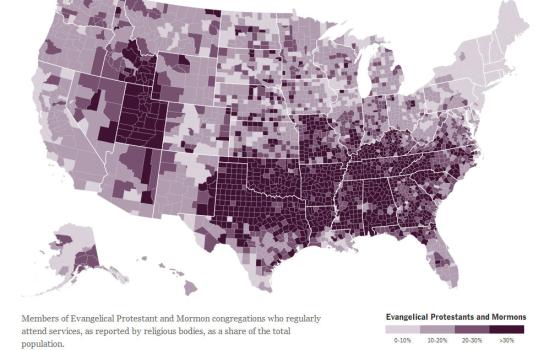Last week, religion blogger Tobin Grant created a graph showing where America’s various religions fall on the political spectrum, based on data from the Pew Forum. While the original graph grouped all Catholics in a monolithic category, on Tuesday, Grant released a second graph breaking American Catholic down into eight groups: not practicing, Latino Pentecostal, Latino modern, Latino traditional, Pentecostal traditional, Pentecostal modern, traditional and modern.
Allowing for subgroups of U.S. Catholics drastically changed the way they registered on the graph. Instead of being perfectly centrist, as they were under a single heading, Grant found that:
- Non practicing Catholics are the most liberal subset of U.S. Catholics. Non-Latino, traditional Catholics are the most conservative.
- Latino Catholics support bigger government more than non-Latino Catholics. Whether Pentecostal, modern or traditional, Latino Catholics were significantly more likely to support a bigger government with more services. Non-Latino, traditional Catholics were the most likely to support a smaller government.
- Most Catholics support greater government protection of morality. Only among the two most liberal groups, non-practicing and non-Latino modern Catholics, did the majority support less government involvement on moral issues.
The relationship between religion and politics also has a geographic aspect. This live map with data from the U.S. Religion Census and published in The New York Times shows where devout evangelical Protestants and Mormons – the key groups making up the Christian Right – live in the greatest concentration.

